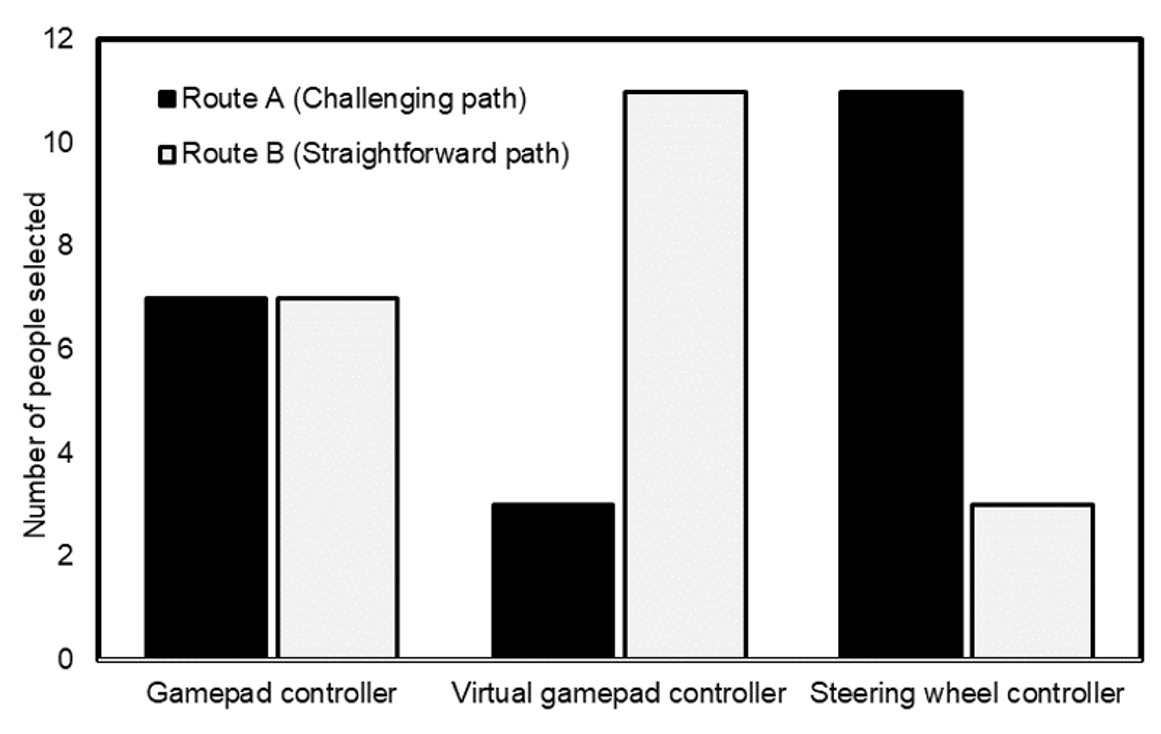Evaluation Method for Robot Interfaces Considering Psychological Safety
Main Article Content
Abstract
Service robots have been implemented across various sectors in recent years to enhance work efficiency. Developing interfaces with an emphasis on usability from a human-centered design perspective is crucial. Numerous evaluation methods have been suggested for robot interfaces, including those focusing on work efficiency and error rate reduction. Although the NASA-TLX safety evaluation method can assess specific indicators in hazardous situations, an evaluation methodology that emphasizes psychological safety is required. In this study, we propose an evaluation approach that considers psychological safety, utilizing a differential two-wheeled robot. Furthermore, we conducted experiments using three different interfaces. The result of empirical experiments elucidated that interfaces characterized by elevated psychological safety engendered a proclivity among participants towards diverse exploratory methodologies and the adoption of venturesome undertakings. Conversely, interfaces marked by diminished psychological safety precipitated impediments for participants, largely attributed to the palpable absence of tactile reinforcement, thereby obfuscating the stimulation of audacious endeavors. Such revelations accentuate the paramountcy of cognizing the nuanced gradations in psychological safety that modulate the propensity for immersion in exigent tasks. Psychological safety pertains to an individual's perception of the consequences of engaging in interpersonal risk-taking. Thus, it is necessary to explore psychological safety assessment models for various interfaces and conduct surveys among study participants to develop a highly accurate model. In the future, we should also consider control models for automobiles and other vehicles.
Article Details

This work is licensed under a Creative Commons Attribution-NonCommercial-ShareAlike 4.0 International License.
This work is licensed under a Creative Commons Attribution-NonCommercial-ShareAlike 4.0 International License.
References
IFR International Federation of Robotics. World robotics 2021-Service robots report released [Internet]. 2021 [cited 2022 Aug 12]. Available from: https://ifr.org/ifr-press-releases/news/service-robots-hit-double-digit-growth-worldwide.
Rodriguez-Lizundia E, Marcos S, Zalama E, Gómez-García-Bermejo J, Gordaliza A. A bellboy robot: study of the effects of robot behavior on user engagement and comfort. Int J Hum Comput Stud. 2015;82:83-95.
Walters ML, Woods S, Koay KL, Dautenhahn K. Practical and methodological challenges in designing and conducting human-robot interaction studies. Proceeding of the AISB 05 Symposium on Robot Companions; 2005 Apr 12-15; Hatfield, UK. Hatfield: AISB; 2005. p. 110-120.
Rubagotti M, Tusseyeva I, Baltabayeva S, Summers D, Sandygulova A. Perceived safety in physical human-robot interaction—a survey. Robot Auton Syst. 2022;151:104047.
Wirtz J, Patterson PG, Kunz WH, Gruber T, Lu VN, Paluch S, et al. Brave new world: service robots in the frontline. J Serv Manag. 2018;29(5):907-931.
Ogreten S, Lackey S, Nicholson D. Recommended roles for uninhabited team members within mixed-initiative combat teams. 2010 International symposium on collaborative technologies and systems; 2010 May 17-21; Chicago, USA. USA: IEEE; 2010. p. 531-536.
Nomura T, Kanda T, Suzuki T, Kato K. Prediction of human behavior in human--robot interaction using psychological scales for anxiety and negative attitudes toward robots. IEEE Trans Robot. 2008;24(2):442-451.
Hart SG, Staveland LE. Development of NASA-TLX (Task Load Index): results of empirical and theoretical subject. Adv Psychol. 1988;52:139-183.
Large, DR, Banks V, Burnett G, Margaritis N. Putting the joy in driving: investigating the use of a joystick as an alternative to traditional controls within future autonomous vehicles. Proceedings of the 9th International Conference on Automotive User Interfaces and Interactive Vehicular Applications; 2017 Sep 24-27; Oldenburg, Germany. New York: ACM; 2017. p. 31-39.
Naor M, Adler N, Pinto GD, Dumanis A. Psychological safety in aviation new product development teams: case study of 737 MAX airplane. Sustainability. 2020;12(21):8994.
Torralba KD, Jose D, Byrne J. Psychological safety, the hidden curriculum, and ambiguity in medicine. Clin Rheumatol. 2020; 39(3):667-671.
Edmondson AC. Psychological safety, trust, and learning in organizations: a group-level lens. In: Kramer RM, Cook KS, Editors. Trust and distrust in organizations: Dilemmas and approaches. New York: Russell Sage Foundation; 2004. p. 239-272.
Mayer J, Mussweiler T. Suspicious spirits, flexible minds: when distrust enhances creativity. J Pers Soc Psychol. 2011;101(6):1262-1277.
Schein EH. Organizational culture and leadership. 4th ed. USA: John Wiley & Sons; 2010.
Edmondson A. Psychological safety and learning behavior in work teams. Adm Sci Q. 1999;44(2):350-383.
Nielsen J. Usability engineering. USA: Morgan Kaufmann; 1994.
Smith MK. Chris Argyris: theories of action, double-loop learning and organizational learning [Internet]. The Encyclopedia of Informal Education. 2001 [cited 2022 Aug 12]. Available from: https://infed.org/mobi/chris-argyris-theories-of-action-double-loop-learning-and-organizational-learning/.
Kelber CR, Webber W, Gomes GK, Lohmann MA, Rodrigues MS, Ledur D. Active steering unit with integrated ACC for X-by-Wire vehicles using a joystick as HMI. IEEE Intelligent Vehicles Symposium; 2004 Jun 14-17; Parma, Italy. USA: IEEE; 2004. p. 173-177.


